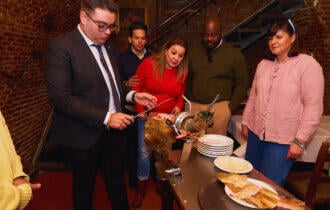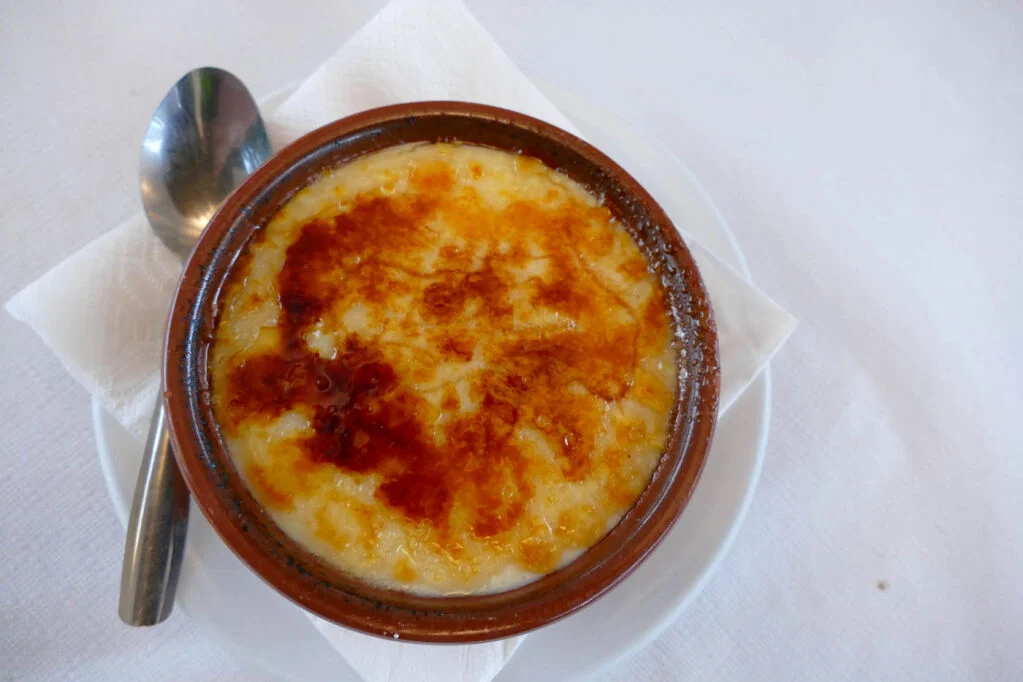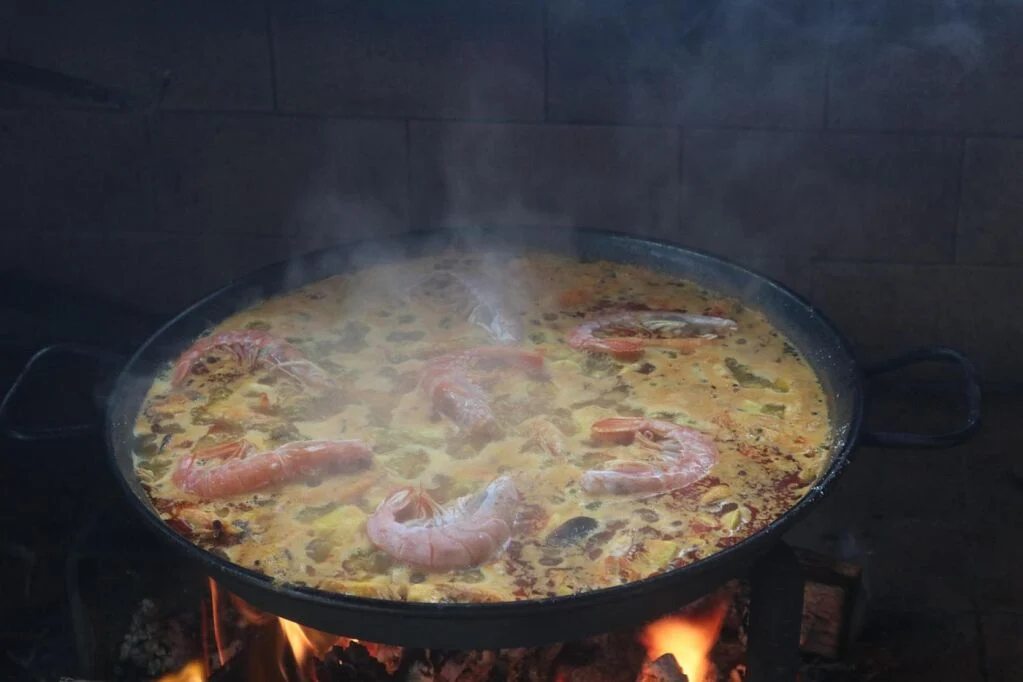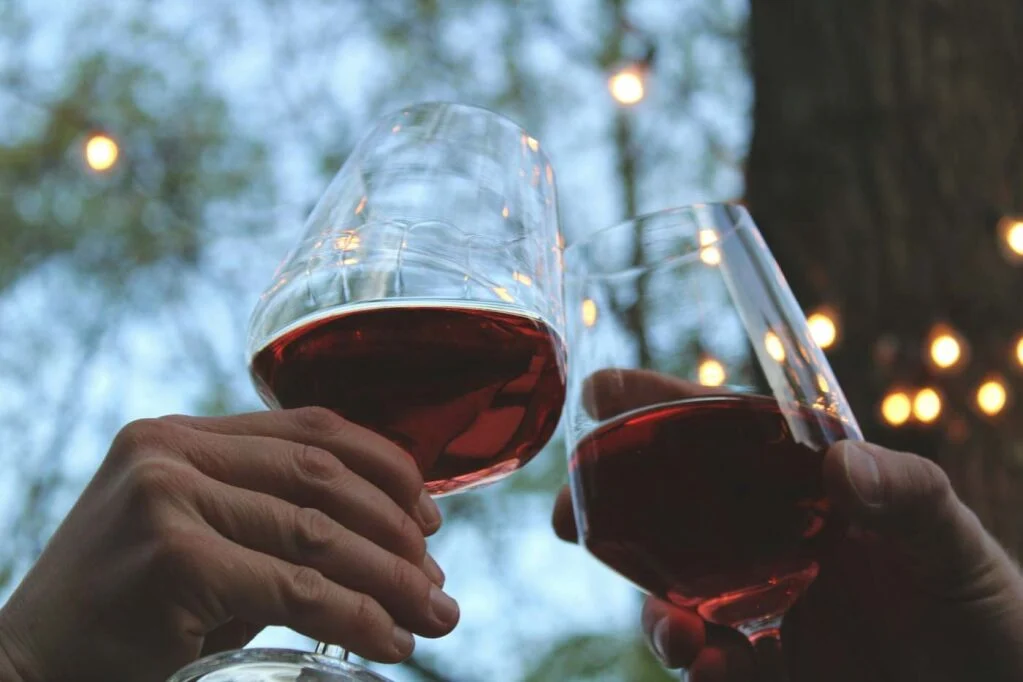Even if you’re well acquainted with Spanish cuisine, there’s a good chance you’ve yet to encounter some of the beloved Easter foods in Spain! I try to immerse myself in the local fare whenever I visit, but I was exposed to another world of culinary delight when I arrived during ‘Semana Santa,’ otherwise known as Holy Week.
My Madrid food tours will give you great insights into regional flavors and ingredients, but with Easter bookings to Spain increasing this year, I felt it was the right time to put together this guide to Semana Santa foods!
The Role of Food in Semana Santa
Although Spain is still a predominantly Catholic country, the church’s influence on society has dwindled over the years. Yet, the cultural and gastronomic traditions associated with Holy Week continue to stand the test of time.
Food-focused gatherings and shared dining experiences are very much hallmarks of Spanish culture, but they’re more important than ever during times of celebration.
Sweet treats feature heavily in the culinary scene throughout Lent. However, many traditional Spanish Easter desserts are reserved for Semana Santa, the final week of the 40-day Lenten period.
Additionally, many people abstain from meat to commemorate the fasting and suffering of Jesus, meaning that Easter soups and stews tend to be vegetable or fish-based.
Top Traditional Spanish Easter Foods
Potaje de Vigilia
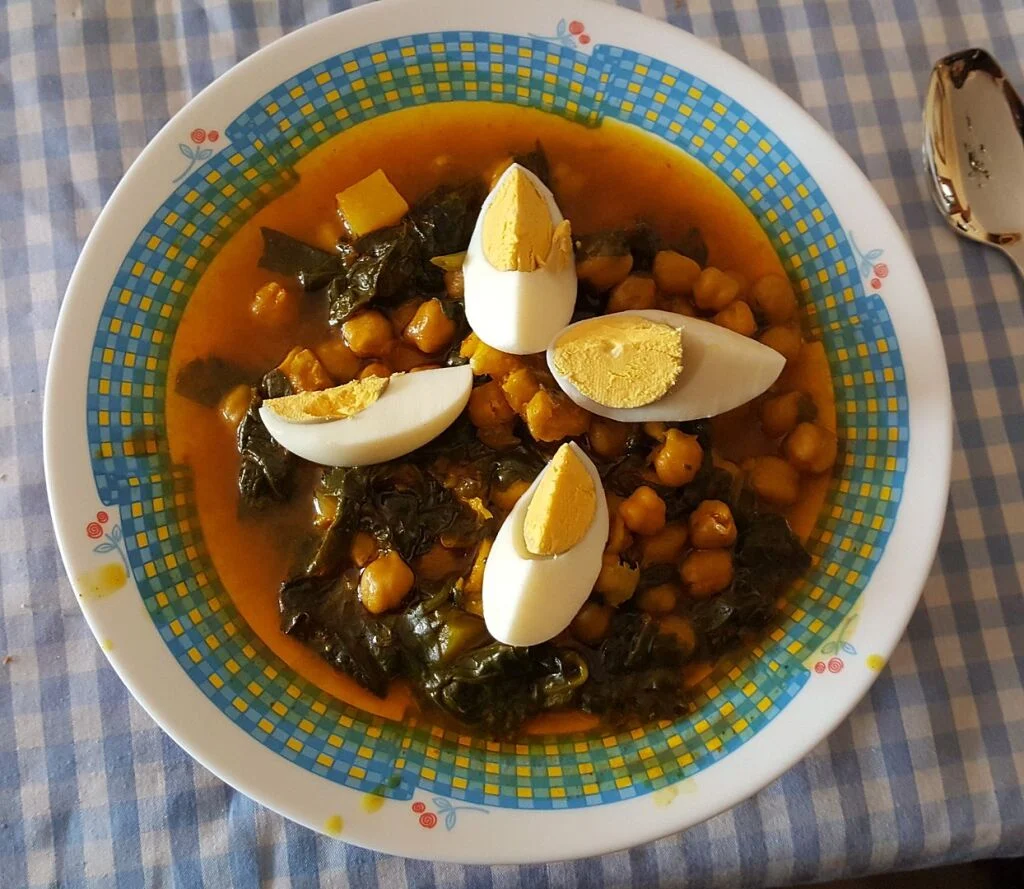
If you try just one Easter food in Spain, make it potaje de vigilia. This nourishing stew is made from cod, chickpeas, and boiled eggs and is a Semana Santa staple nationwide.
The specific birthplace of potaje de vigilia is unclear, but it likely came about as Spaniards tried to veer away from meat-based dishes during Lent. Cafe del Kasco in Toledo, not far from Madrid, is a fantastic place to try it.
Torrijas
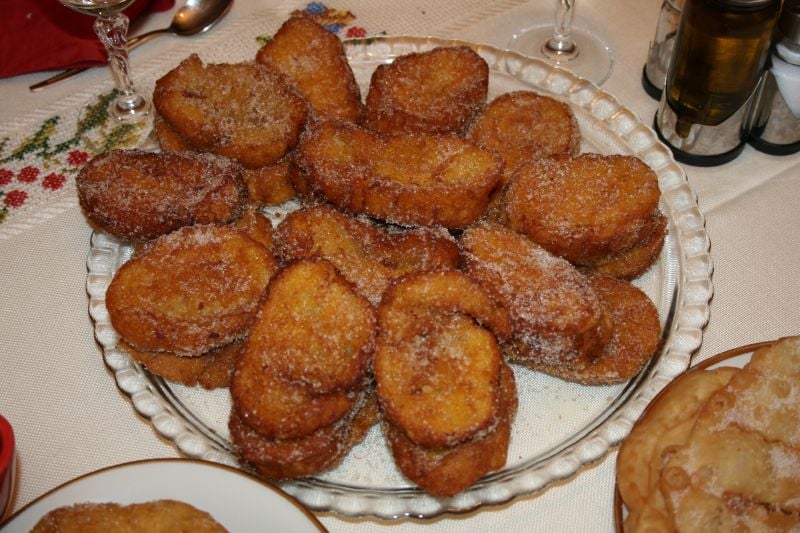
Torrijas was the Easter dessert I was most eager to sample, as it’s essentially a Spanish take on French toast! Sometimes, the bread is soaked in wine, but it’s usually dipped in milk and egg before getting fried in olive oil and dusted with cinnamon.
These Andalusian goodies came about in the medieval era when locals tried to use up stale bread, and the team at Aparicio in Malaga prepare some particularly tasty varieties.
Carolyn, our operations manager in Madrid says:
“Growing up, I would help my mother and grandmother make Torrijas every Easter. It started as a simple tradition where I would be in charge of coating them in sugar, but over the years I’ve refined the recipe, adding my own twist – serving them warm with a scoop of ice cream for an extra indulgent touch!”
Hornazo
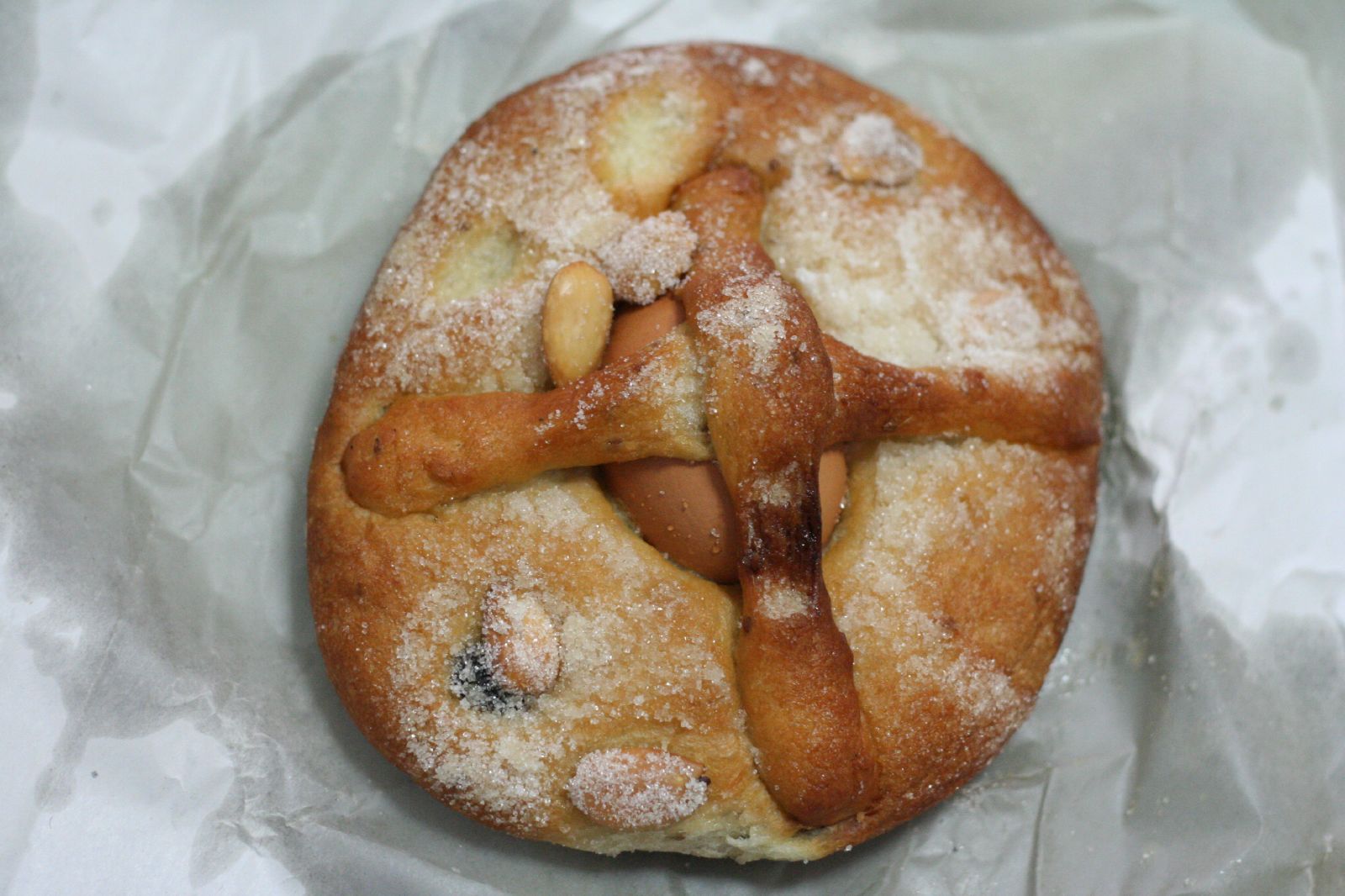
Hornazo is a meat-lover dream, as this satisfying pie is typically filled with pork loin, chorizo, and boiled eggs. While sweet alternatives exist, the savory version is the most renowned of the two.
The dish traces its roots to Salamanca in the Castile and León region. In the past, hornazo was enjoyed as a celebratory snack during Lunes de Aguas, on the first Monday after Lent. If you find yourself in the city, you have to check out the goods at Pastelería La Hornazería.
Mona de Pascua
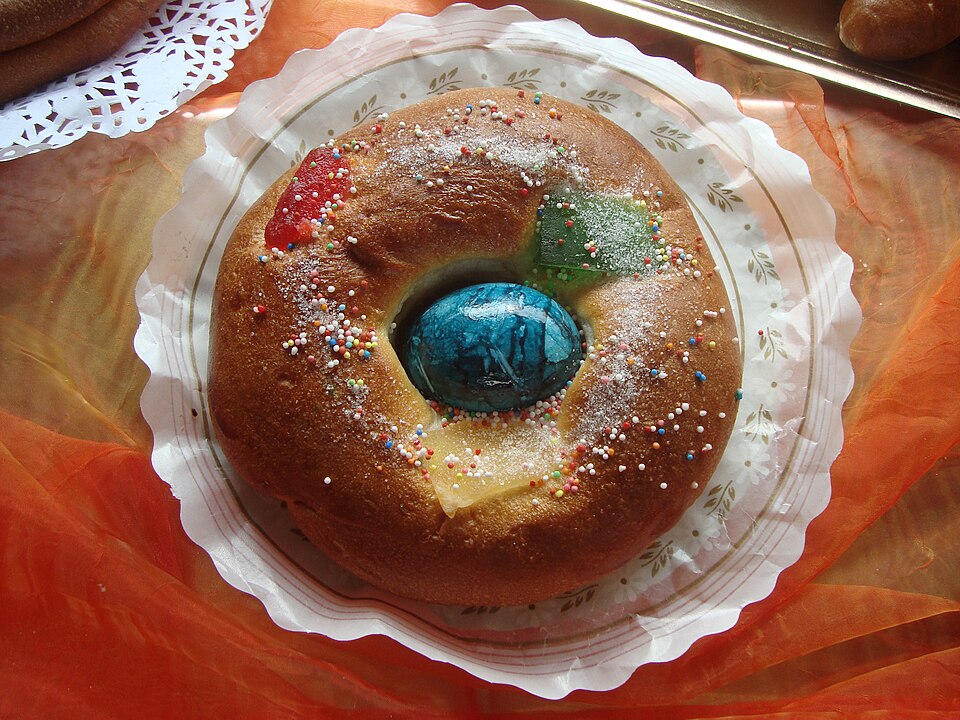
There tends to be quite a lot of symbolism in Easter foods in Spain, and one of the best examples of this is Mona de Pascua. This round brioche cake is an Easter Sunday and Monday specialty, usually topped with boiled eggs to represent new life.
Catalonia is synonymous with this delightful dessert and Lyndsy, our Barcelona food tour guide says,
“Dating back to the 15th century, this Easter treat has nothing to do with monkeys (Monos) and everything to do with all the sweet ingredients catholics can not eat during the month of Lent. They would save the eggs to make a sweet round cake with a hole in the middle symbolizing rebirth. Traditionally they decorate it with hard-boiled eggs to eat on Easter Sunday and end the Lent season, welcoming Spring.
“The Godparents of a child are meant to give a Mona to their godchild to end their gastronomic fasting. Bakeries display elaborately decorated Monas covered in chocolate eggs, chicks and bunnies to celebrate Spring. If your mona includes a hardboiled egg in the middle, it’s quite traditional to ‘crack’ them on the forehead of your family members or friends… preferably by surprise!”
Those of you planning to spend Easter in Barcelona will love the varieties of this cake at Escribà.
Sopa de Ajo

Easter food in Spain isn’t just about the sweet stuff, and sopa de ajo proves that the Spanish are just as talented at preparing savory options. It’s a simple garlic soup made from chicken broth, paprika, and stale bread, and in some cases, eggs or ham are added.
Despite starting out as a peasant dish, sopa de ajo later became an Easter favorite in Madrid and Castile and León. I sampled it for the first time in Sobrino de Botín and couldn’t recommend it enough!
Bueñelos
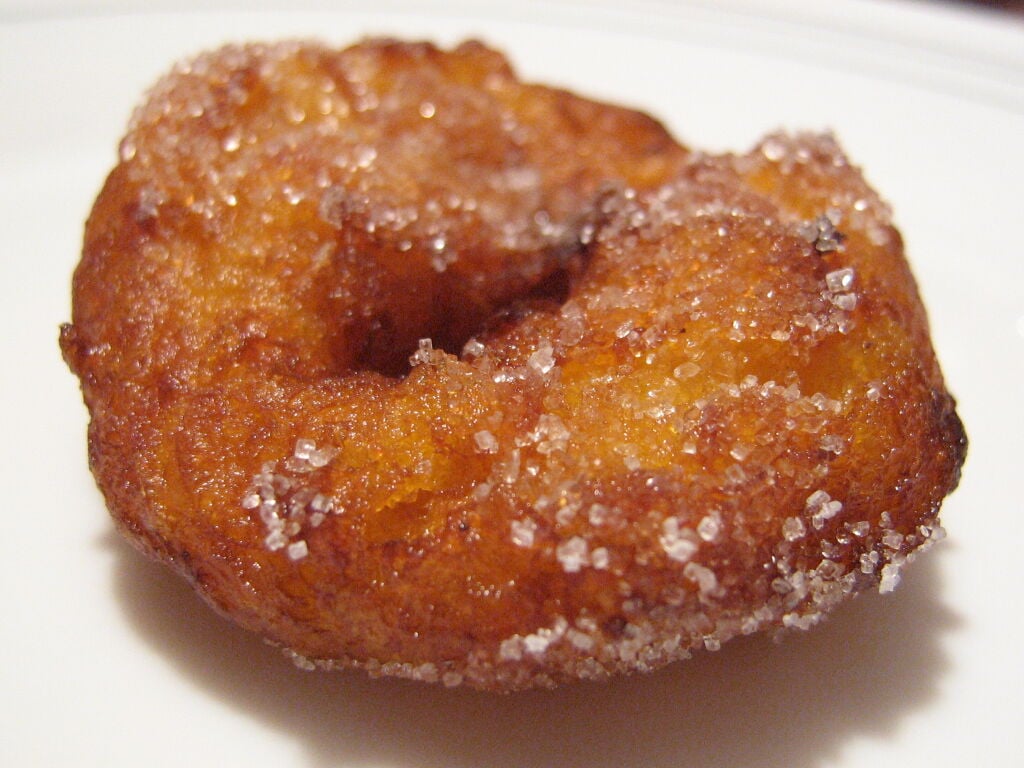
Bueñelos are Spanish-style fritters. Flour, butter, eggs, and milk are combined to form a light dough that’s then fried and sometimes filled with a saccharine filling of cream, chocolate, or custard.
They came about as a result of Moorish influences in Andalusia, and I managed to secure some at Bellas Durmientes in Malaga.
Regional Easter Food Highlights
Some Easter foods in Spain are favorites in almost every corner of the country, while others are particularly popular in specific regions.
Below are some regional Easter specialties to look out for, depending on which part of Spain you find yourself in.
Madrid/Castile and León: Sopas de ajo, bartolillos, hornazo
Catalonia: Mona de Pascua, escudella i carn d’olla
Valencia: Bacalao, panquemao
Andalusia: Torrijas, bueñelos
Basque Country: Bacalao al pil pil, pastel vasco
Conclusion
There’s never a bad time to visit Spain, as the food is exceptional no matter when you arrive! That said, sampling the Easter food in Spain is especially exciting, allowing you to experience sumptuous fare that’s almost impossible to find throughout the rest of the year.
Sources
Eating Europe. (n.d.). Madrid food tours & culinary experiences. https://www.eatingeurope.com/madrid/
Money Tourism. (2024, April 5). 16.8% increase in Easter 2025 bookings – Spain and Portugal in the top positions. https://money-tourism.gr/en/16-8-increase-in-easter-2025-bookings-spain-and-portugal-in-the-top-positions/
Tripadvisor. (n.d.). Cafe Del Kasco, Toledo. https://www.tripadvisor.ie/Restaurant_Review-g187489-d4039151-Reviews-Cafe_Del_Kasco-Toledo_Province_of_Toledo_Castile_La_Mancha.html
Facebook. (n.d.). Confitería Aparicio. https://www.facebook.com/p/Confiter%C3%ADa-Aparicio-100059128663902/
Tripadvisor. (n.d.). Escribà, Barcelona. https://www.tripadvisor.ie/Restaurant_Review-g187497-d2314979-Reviews-Escriba-Barcelona_Catalonia.html
Botín. (n.d.). Sobrino de Botín – The oldest restaurant in the world. https://botin.es/en/
bellasdurmientes_cafeteria. (n.d.). [Profile]. Instagram. https://www.instagram.com/bellasdurmientes_cafeteria/?hl=en



